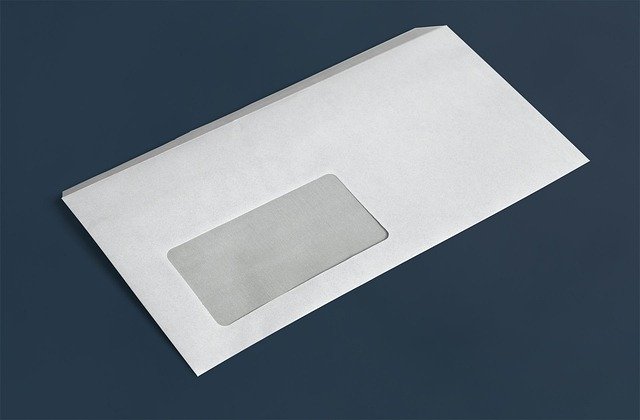How to Write and Address an Envelope Correctly
Envelope writing is a useful skill that helps letters and cards reach the right place. This article explains how to place the recipient and return addresses, where to put the stamp, and how to organize the layout clearly. Learn practical tips for neat handwriting, spacing, and arranging information so your letters look tidy and easy to read while practicing a useful everyday skill.

In today’s digital age, the art of properly addressing an envelope remains an important skill. While email and text messages have become common forms of communication, physical mail still plays a crucial role in both personal and professional settings. Correctly formatted envelopes not only ensure your mail reaches its intended recipient but also conveys professionalism and attention to detail. Whether you’re sending wedding invitations, business correspondence, or holiday cards, understanding the fundamentals of envelope addressing will help your mail arrive promptly and make a good impression.
Essential Components of a Properly Addressed Envelope
The foundation of correctly addressing an envelope begins with understanding its key components. Every properly addressed envelope should include the recipient’s name and complete address, a return address, proper postage, and all information placed in the correct positions. The recipient’s address should be centered on the envelope, while the return address belongs in the upper left corner. Postage is always affixed to the upper right corner. Using blue or black ink ensures readability by both humans and automated mail sorting machines. Clear, legible handwriting or printed labels help prevent delivery errors and delays in the postal mail layout.
Step-by-Step Guide to Addressing Personal Mail
When addressing personal correspondence, start by writing the recipient’s full name on the first line of the address block. Use appropriate titles such as Mr., Mrs., Ms., or Dr. when applicable. On subsequent lines, include the street address, apartment or unit number, city, state, and ZIP code. For personal letters, you may include an attention line if sending to someone at a shared residence. The return address should follow the same format but positioned in the upper left corner of the envelope. This letter writing tips approach ensures your personal mail maintains both formality and clarity while adhering to postal service guidelines for efficient processing.
Business Envelope Addressing Standards
Business correspondence requires additional formality in addressing envelopes. Begin with the recipient’s full name and professional title on the first line. The second line should contain their company or organization name. Follow with the complete street address including suite or room numbers on the third line, and city, state, and ZIP code on the final line. For internal mail within large organizations, include department names or mail stops. When addressing mail to a specific person within a company, you may add an “Attention:” line before the recipient’s name. Business envelopes typically use printed letterhead for the return address to maintain professional branding and consistency in the postal mail layout.
International Mail Addressing Considerations
Addressing international mail requires special attention to country-specific formats and postal requirements. Always place the destination country name on the last line of the address, written in capital letters and in English. Research the proper address format for the specific country, as conventions vary significantly worldwide. Some countries use postal codes before the city name, while others place them after. Include the appropriate international postage and any necessary customs forms. When using an envelope addressing guide for international mail, remember that clarity is paramount—avoid abbreviations that may not be recognized globally, and consider adding the country code to phone numbers if included.
Special Formatting for Different Mail Types
Different types of mail require specific formatting approaches. For formal invitations, larger envelopes with centered addresses and possibly calligraphy are appropriate. When sending packages, clearly mark them with “Fragile” or “Handle with Care” if needed, and include complete addressing information on a single side. Certified mail, registered mail, or mail requiring signatures should be clearly marked according to postal service guidelines. When sending mail to military addresses, follow the specific APO/FPO/DPO format requirements. Understanding how to write an envelope correctly for these special circumstances ensures proper handling and delivery regardless of the mail type.
Common Mistakes to Avoid When Addressing Envelopes
Even minor errors can delay mail delivery or cause items to be returned. Common mistakes include incomplete addresses, illegible handwriting, incorrect ZIP codes, and improper abbreviations. Avoid using colored envelopes that may confuse automated sorting machines, and never use pencil as it can smudge or fade. Another frequent error is placing the return address in the wrong location or omitting it entirely. Following proper letter writing tips helps avoid these pitfalls. Always verify addresses before sending important mail, and when in doubt, check with your local postal service for guidance on correct addressing formats for specific situations.
In conclusion, mastering the skill of properly addressing an envelope is a practical necessity that enhances communication efficiency. By following the guidelines outlined in this envelope addressing guide, you’ll ensure your correspondence reaches its destination promptly while presenting a professional appearance. Whether sending personal notes, business documents, or international mail, attention to detail in envelope preparation demonstrates care and consideration. As postal systems continue to automate, adhering to standardized addressing practices becomes increasingly important for successful mail delivery.




